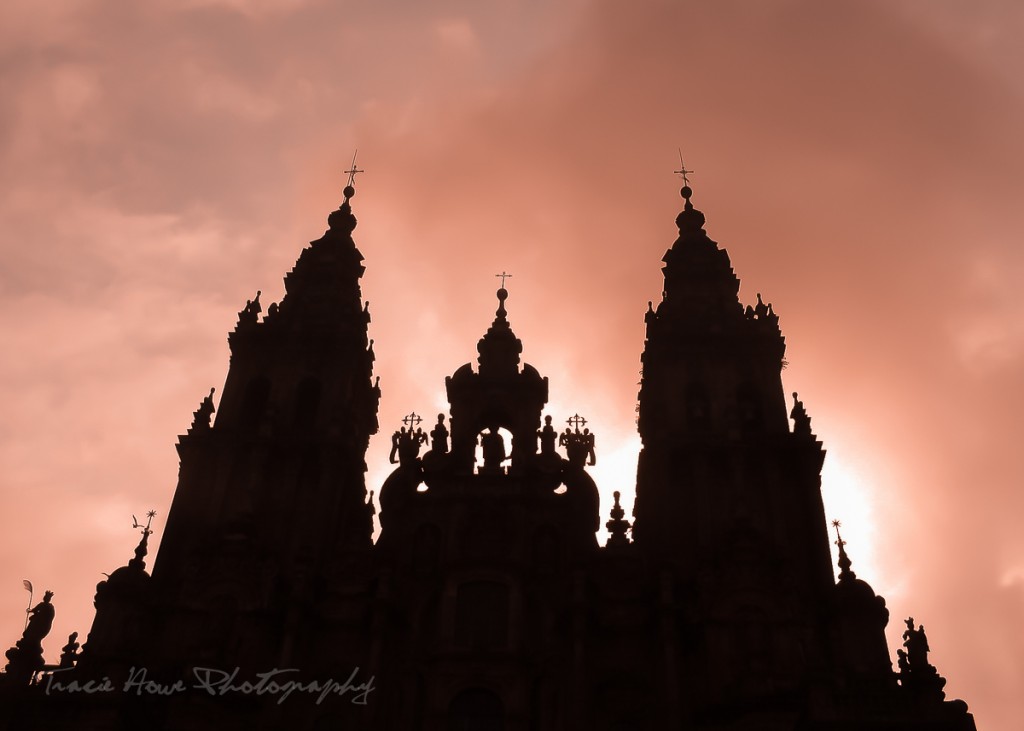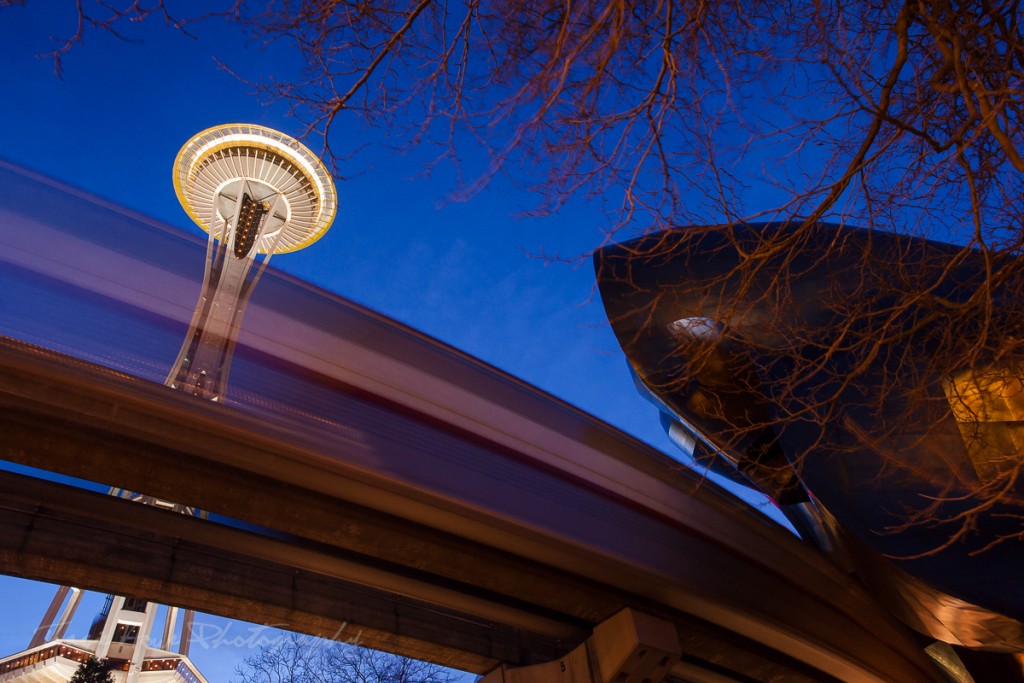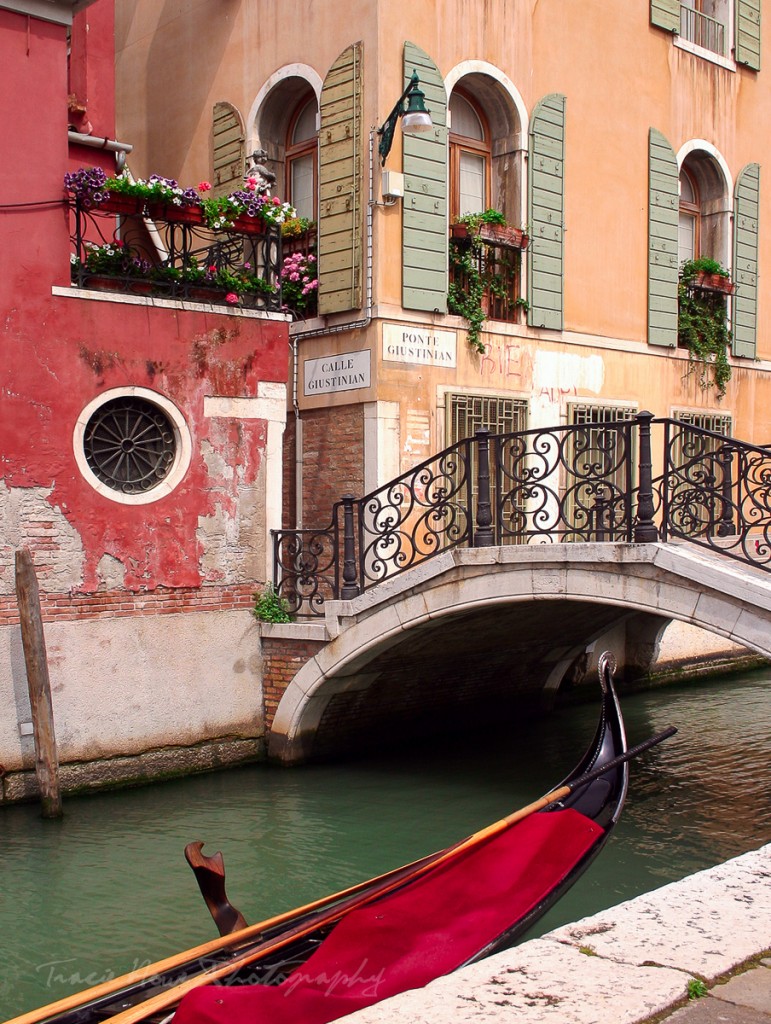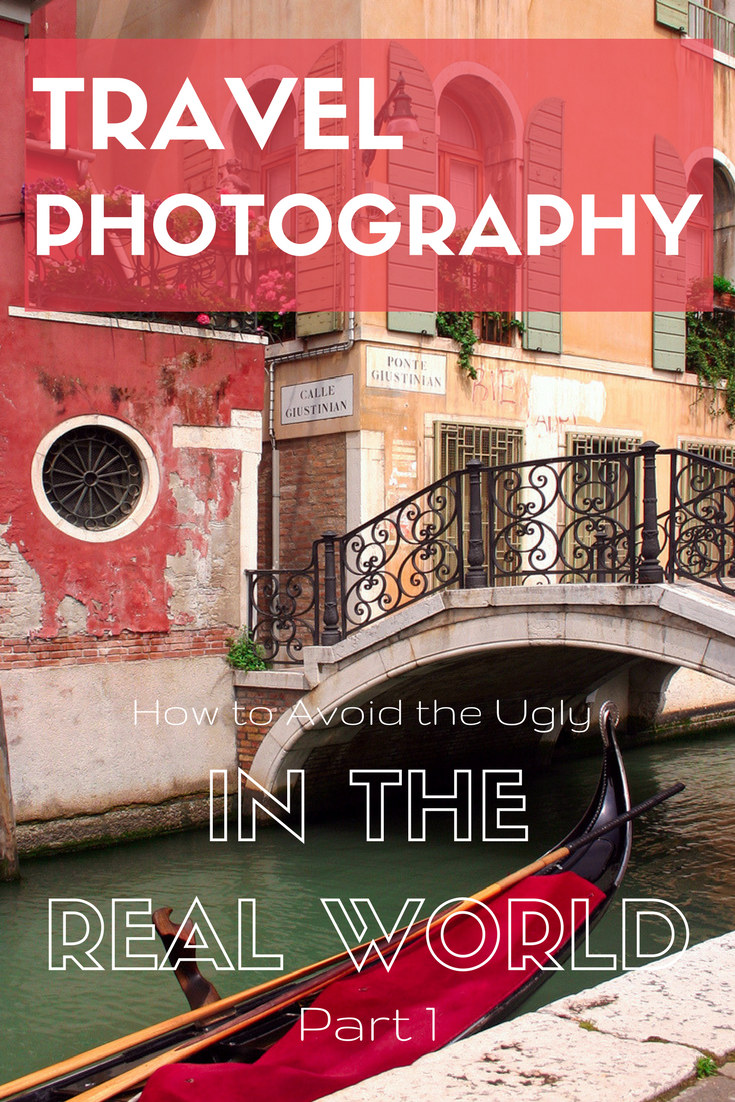Crowds, construction, and chaos. Every where in the world you will find eyesores that can ruin what could have been a great photo; often one that you’ve had on your photography bucket list for years. Dan, of This World Rocks, illustrated this point well in his post – 17 bucket list items ruined by real images. In the post, he reveals the reality of travel with shocking real world photos of destinations that frequent bucket lists. This two part post is about trying to avoid those real world eyesores, but it will make a lot more sense if you read his first. Just don’t forget to come back here!
Welcome back!
So, this got me thinking about how I approach travel photography and the challenges that I have faced when photographing a place with less than ideal surroundings. I wanted to share some ways that might help you to avoid the ugly in your own travel photography.
I have broken this down into two posts. The first part touches on how you can approach travel photography and plan ahead, while the second part is about the best practices when faced with these challenges.

Aiming high, I was able to capture a unique silhouette in the busy square at Santiago de Compostela.
Part 1:
First, ask yourself what it is that you are trying to convey
Travel photography offers a broad range of possibilities from the harsh realities revealed in magazines like National Geographic to the travel fantasies we all drool over presented by Travel + Leisure. Even within such publications the spectrum can vary. You have to think about what it is that you want to convey to your audience when you photograph a place, and for me that is travel inspiration.
I remember the “aha moment” when I figured out that I wanted to be a photographer – I was looking at one of those epic landscape photos in a travel book and imagining what it might be like to visit that place. I already loved to travel, but the day dreaming that commenced just by viewing the photo was so powerful that I realized I wanted to invoke the same feeling in other people. Of course it meant that I could travel as a job too (what can beat that?), but I had a purpose in mind that drove me to start my photography career. So for me, it is important to inspire people to travel, explore, and see all that the world can offer. That is, despite the ugly chaos present in the real world of travel.
Do I think it is misleading to present a location as beautiful even if it is actually surrounded by garbage, tourists, or other unsavory eyesores? Not at all! An oasis of beauty amongst chaos can make a location (sometimes a very precise spot) all the more special. If I have been inspired by other images of this place, and I succeed in capturing it too, I know that I can then inspire others to go there myself. Given the opportunity, I will be honest about the challenges I have faced in capturing a photo or series of photos, and I will share that here with you. That’s a big part of what this blog is about – educating you to take better photos and showing you how to overcome the obstacles.

The Space Needle, Seattle’s icon, photographed at the edge of a busy intersection from a unique perspective. Read my next post on using long exposures to avoid people in your photo.
So, if you know what kind of travel photos you want to capture, how do you make them happen?
Brace yourself for the unexpected and plan ahead
You might be surprised how much you can find out about a place when you do some prep-work. A lot of amateur photographers show up to a place expecting it to be made for them, available for their every photographic whim, but you have to do your homework to get those shots you’ve been dreaming of.
Google is your friend
Often simply Googling “how to photograph…” will get you the information you need. If that ends up requiring a little more work, you can try finding the answers to the following questions:
- Have I seen a recent photo of this place? (Maybe there are new restrictions or obstacles that weren’t present when that photo was taken.)
- What’s the specific spot? (You should figure out exactly where to stand to take your photo.)
- How do I get to this spot? (Do you simply walk from your room? Do you need a licensed guide? Is it 3 days away from civilization?)
- Is this spot accessible 24 hours every day? (Maybe the crowds are only around during the afternoon on weekends. Maybe the gates are closed after 5pm.)
- Is this a popular spot? (Is this in a busy city or a quiet town in the middle of nowhere?)
- What kind of gear do I need? (Will I need to climb a mountain or do I simply need a tripod?)
Learn about the place
It’s important to educate yourself on general travel before you go anywhere, especially if you can’t find much on photographing a destination. You can gather plenty of useful information from travel guidebooks, such as those published by Lonely Planet. These are not geared for photographers, but they are excellent resources that provide general travel tips and essential logistical information. And, of course, I have guides about certain destinations (and often how to photograph them) here on the blog. ;)

Exploring beyond the main tourist areas and shooting a small area allowed me to get this shot during high tourist season.
Go anyway
This is contrary to what I have been saying, but I’m not one to skip a destination just because I can’t find out enough about it in advance. Part of the fun is discovering the challenges first hand. Of course, it helps to have more time in these instances so you can try again on another day, at another time, and maybe even at a different location. When I face my own challenges, I often feel responsible for sharing them with you, here on my blog, so that you don’t have to stumble your way through like I did. Here is an example if you’re curious about one such failed attempt: Photographing the Prosser balloon rally .
If I do go to a place without doing much research and I encounter unforeseen challenges, I can blame myself for not being prepared, but I can also be flexible. Being flexible means dealing with what you’ve been dealt whether you expected it or not.
In part 2 of this post, I go more in depth about specific strategies you can use to avoid those nasty travel eyesores in your photos. Be sure to subscribe so you don’t miss out on Part 2!







Natalie Deduck - Thanks for sharing tips & advice Tracie!!
Sending you post to husband too, he is in charge of our travel photos.
One thing that we discovered is depending on the place you are, the people around can help you to give the sense of size and magnitude of place. For example, we have some photos at the Sahara desert that are stunning, only the dunes and sand. But there is a particular one with a guy on the top of the dune that is outstanding. Because he gave the dimension of the place and how giant the dunes are. After that I started think about people as part of the picture, not bothering so much about taking them out of my lense. But the cars and busses in movement I’m still no able to figure out how to make them part of a nice picture.
Thanks for cheering you knowledge.
Nat
traciehowe - Great! Thanks for sharing it. Part 2 is more about specifics, and including people in your photos is definitely one of the ideas I mention. I struggled for a while because I didn’t want to include people at all, but I now force myself to think about them as part of the scene and often prefer these images. Thanks for your comment!
Joe Ankenbauer - Great post! I use the last tip all the time. Go anyway! I mean we wanted to go initially for some reason right? I’d rather have more “Wow, I’ll never do that again”, than “what if’s.”
Love the spacebeee photo too. Reminded me of home!
traciehowe - Thanks, Joe! I totally agree! I have had just a few “what if” regrets after not going somewhere and those have haunted me until this day!
karla - I agree with you in terms of research. Lately, before going to a destination I try to look at google and instagram for photo pegs. Of course, while at the place itself, it is up to you however you want to frame your photo and all that but its best to be prepared. Also, I love spending a lot of time just exploring one place and seeking out the different angles and points of views ( sometimes a different point of view makes a more interesting photo )
traciehowe - Thanks, Karla. Yes, I have a Pinterest collection of places I would like to photograph, but I almost always end up capturing them from a different perspective. And you are so right about a different point of view making a more interesting photo! Sometimes all you have to do is turn around!
Jackie - I’ve always loved that picture that you took in Venice. It is beautiful. You have more patience then I would have waiting for the right moment. After seeing the bucket list photos of all the people on the China Wall, I think I will stay home, thank you.
traciehowe - Haha! Thanks, Mom.
Chris - Ah, this post immediately brought to mind the crazy amount of frustration we’ve had with many iconic landmarks on this trip (as well as others), quite often involving scaffolding!
The Hungarian parliament (covered in scaffolding), El Capitolio in Havana (more scaffolding), Capitol Hill in DC (you guessed it, scaffolding), parts of Palenque (more scaffolding)!!
What can you do hey! lol ;-)
traciehowe - Yes, scaffolding is one of those things you just can’t avoid if you want a photo of an entire building. An entire side of the Sphinx in Egypt was covered in it! Blah!
Katja - globetotting - I found this a really interesting post, thanks! I admit to being something of a lazy photographer so it’s great to have some good tips to follow. I look forward to part 2!
traciehowe - Thanks, Katja. If you admit to being a lazy photographer, you’ll feel really lazy once you read part 2! ;) It definitely takes some effort to get good photos.
Doreen Pendgracs - interesting thoughts about photography, Tracie.
As a writer, I always try to research a destination before visiting, but I didn’t realize that you photogs do the same kind of pre-arrival work. Makes sense!
traciehowe - Thanks for your comment, Doreen! I’m sure other photographers do a better job of researching beforehand. My impatience often takes over and I just want to get going. I get a little too excited about traveling sometimes! ;)
Julie @ Girl on the Move - Truly great tips, thank you for sharing! Sometimes I struggle with travel photography because even if I was an expert photographer I feel like you just can’t capture the whole essence of the experience…
So I like these tips for how to make your pictures as good as you can!
traciehowe - Thanks for your comment, Julie. I think part 2 will help you even more! :)
Kimberly Erin - Very well thought out. This is defo something I find to be very helpful, as a kind of beginner photographer. Thanks for this, I cant wait for part 2
traciehowe - Thanks, Kimberly. Part 2 is almost ready and should give you a lot more to think about.
Elizabeth - Looking up and Bending down can help change the angles to get an unusual shot (and sometimes hide the ugly!)
traciehowe - Yep! Mentioned in part 2. ;) Thanks, Elizabeth.
Gabby | The Globe Wanderers - Great post Tracie – I’m so looking forward to part 2! I quite frequently find beautiful buildings are covered in scaffolding when I visit – absolutely gutting. But i guess it’s all about experimenting with angles :). Definitely going to start doing more photography research before visiting a place as well!. I’ll be consulting Google and Instagram! See you for part 2!
Gabby
traciehowe - I’m glad you enjoyed it, Gabby! Yes, scaffolding is the absolute worst, isn’t it? I hope part 2 gives you more strategies to practice.
Gemma Two Scots Abroad - Very tangible advice. There is one photo I have of a very busy beach just outside of Cartagena and those that have been there are like – eh how did you get the beach to yourself. The beauty of photography! Although it’s sad a times that the lens can set up a false story too. Looking forward to part two Tracie!
traciehowe - Thanks, Gemma! Yes, it can be sad. Very sad if a place used to be pristine and untouched, and now a garbage heap. But sometimes, if a place is only partly “ruined”, it can be magical to find that unspoiled treasure. It can give people hope and inspiration. That’s why I wanted to be straightforward in this post about how I choose to present a place and what that means to me. I hope you’ll find part 2 more practical.
Carolann & Macrae - One Modern Couple - Great advice! Really looking forward to part 2! Researching is a great idea – we usually wind up in a place and have to deal with what sort of traffic/environment is present at the time but knowing what days and times and routes are best for photographing a place would definitely help alleviate the frustrations of trying to “avoid the ugly”!
traciehowe - Absolutely right! This is one of the practical tips I give in part 2. I hope you’ll check it out! Thanks for your comment!
Sanket D. - You know I’ve laughed at so many people’s ‘touristy photographs’ that I now find it awkward to ask people to take a picture of mine when I travel solo. Guess what goes around comes around, yeah? Some great tips here. Looking forward to Part 2 :)
traciehowe - Thanks, Sanket. Part 2 is coming soon!
Trisha Velarmino - I really needed this, Tracie!!! Thanks for sharing your photography knowledge. I am on ‘average’ in this department.
traciehowe - You’re welcome, Trisha! I’m sure that part 2 will give you some more practical advice to put into practice. :)
Stacey Valle - Like you said, regardless – go! :) It does test your creativity and patience! You’ll able to find a new perspective to take photos. Sometimes crowds do ruin the scenery, but again, it also great to include few people in the photo too to make a story :)
traciehowe - That is so true, Stacey. I mention that point in part 2, about including people. I cannot agree more about testing your creativity and patience! This is how you become a better photographer (and traveler!).
Travel photography : How to avoid the ugly in the real world - Part 2 - […] you haven’t read part 1 yet, here is your […]